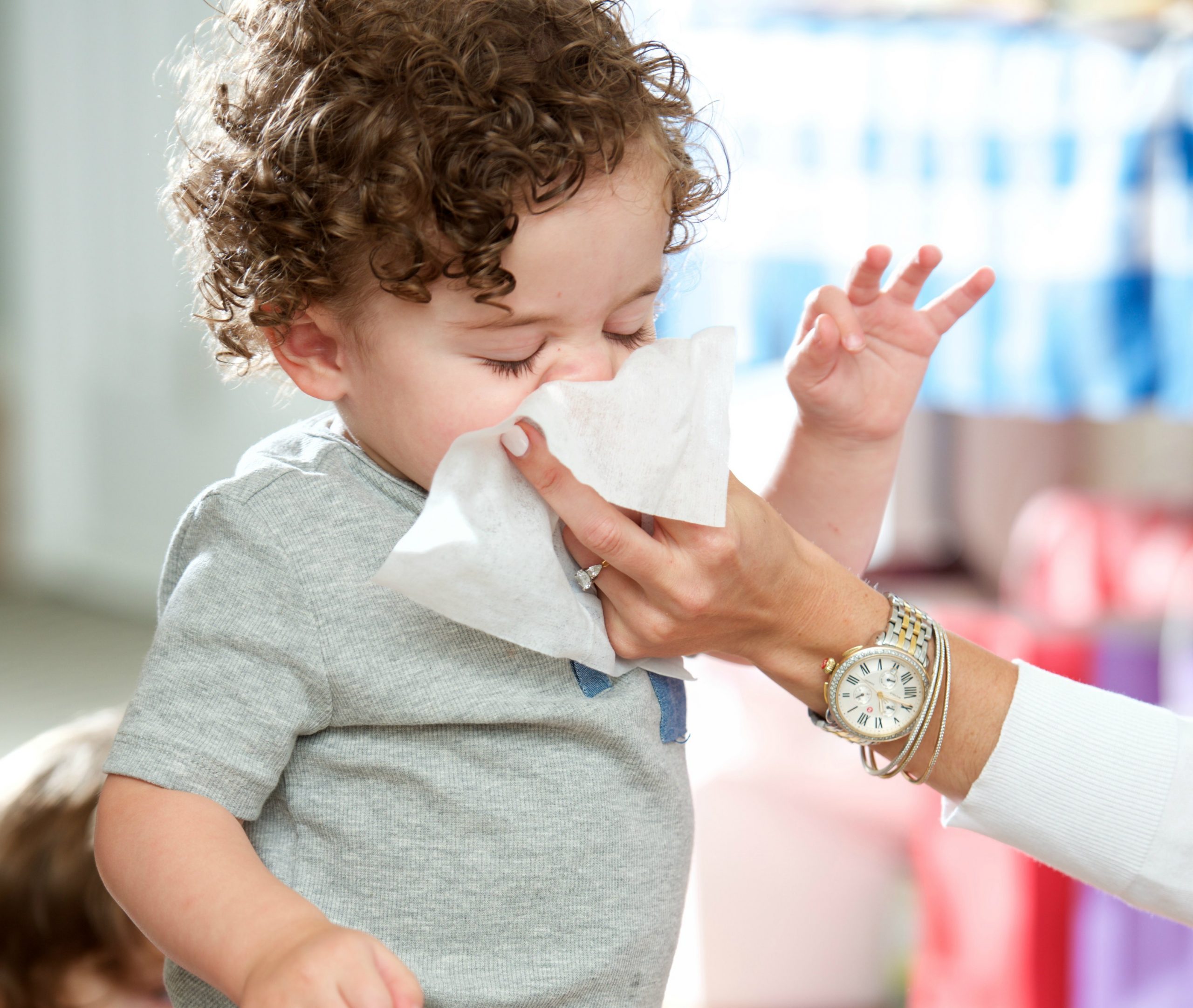
How to Prevent Bloody Noses in Kids
Nosebleeds in kids can be scary and downright messy, but they are a lot more common than you may think. Whether it’s caused by the common cold, allergies, nose-picking, dry air or getting hit in the nose, it’s important to know what to do when your child gets a bloody nose, when to seek medical attention, and how to prevent them in the first place.

Preventing Nosebleeds
1. Add Moisture to Your Home
Adding moisture to your home will help by leaps and bounds. Adding a humidifier to your home will add moisture when it’s needed most. Invest in one that is attached to your furnace directly, or grab a few portable ones that you can place in different areas of your home, especially near where you sleep to help combat the dryness.
2. Add Moisture to Your Child’s Nose
Using a saline nose spray (like Boogie Mist® saline mist) every night can help add moisture to your child’s nose. Click here for simple tips on how to start a saline nose spray with your child.
In addition, use Vaseline or Aquaphor to help keep your child’s nose moisturized throughout the day and at night. A small coating just inside the nostrils can help to soothe irritated, dry noses.

3. Stop that Picking
A lot of nosebleeds are caused by kids digging for gold. Put an end to that by helping your child blow regularly to get the boogies out. Using Boogie Wipes® saline nose wipes can help get rid of crusty snot and boogers while also adding moisture to the nose. Click here for tips on how to teach your child to blow their own nose.
What to Do If Your Child Gets a Bloody Nose
1. Don’t Panic
Staying calm can go a long way in keeping your child calm, and that’s important to help stop the bleeding. Oftentimes the more kids cry or scream during a bloody nose, the more the nose bleeds. Use a soothing voice to talk to your child, turn on their favorite those or have them listen to music while you get to work to stop the bleeding.

2. Don’t Tilt Your Child’s Head Back
While this can seem like the natural thing to do, all it really does is force the blood coming out of the nose to roll down the back of your child’s throat instead. It can cause gagging as well as an upset stomach. Instead, have your child sit upright or lean slightly forward.
3. Pinch the Nose
Pinch your child’s nose on the soft part – just below the bone. You can use a cloth, towel or tissue to soak up the blood while the pressure you’re applying will eventually cause the blood to clot.
4. Be Patient
While it may feel like your child is losing a lot of blood, or like their bloody nose is lasting forever, it’s very common for nosebleeds to last for 10 – 15 minutes. And most bloody noses require pressure on the nose for at least 5 minutes before clotting begins. Remember to stay calm and be patient.
When To Seek Medical Attention for a Nosebleed
As usual, check in with your doctor and take his or her recommendations. Typically, it’s recommended that you seek medical attention if you’re unable to stop a nosebleed after 20 minutes.
Additionally, if your child is having frequent nosebleeds, even after you’ve tried our tips for prevention, check in with your doctor to see if an evaluation might be necessary.
And, finally, if you feel that your child has stuck something up his or her nose (yes, it happens!), seek medical help to have it removed.

For More Information…
Click the links below for more helpful information.
Natural Seasonal Allergy Remedies for Your Kids
How to Start a Saline Nose Spray Routine with Your Kids
Cough, Cold and Flu Tips for Kids
Click here to download a coupon and save on Boogie Wipes® products.
Pin It!
